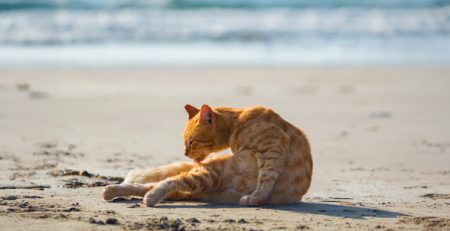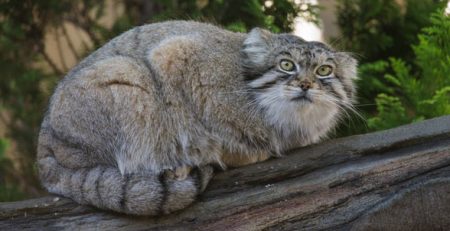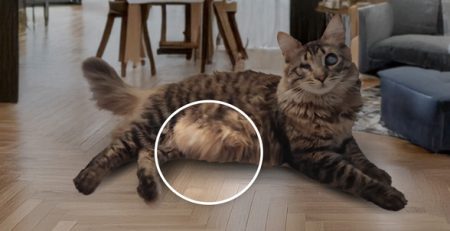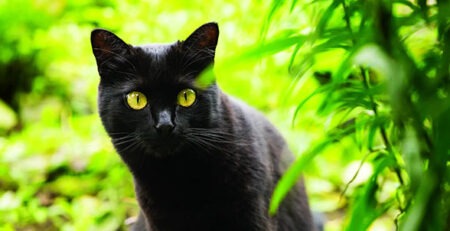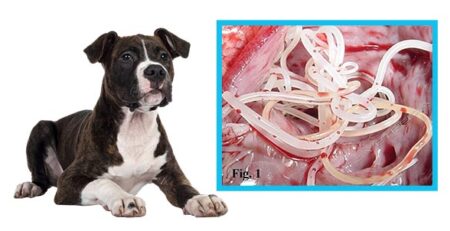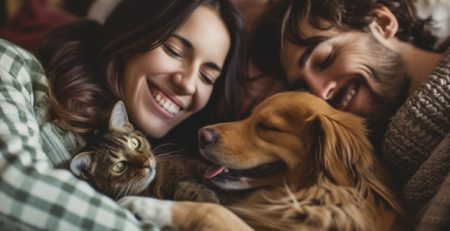Table of Contents
Sphynx: the naked, hairless, somewhat alien-looking cat, always looking for cuddles
The Sphynx cat is a rare cat that is intriguing because of its appearance: hairless, it owes its nakedness to a mutation in the recessive gene “hairless.”
Its out-of-the-ordinary appearance was originally nothing more than the consequence of a spontaneous and accidental mutation, which man then decided to multiply, making it a true breed.
How the Sphynx came to be: the origins and history of the breed
Sphynx did not originate in Aztec-era Mexico as legend has it, but rather in Canada.
The first specimen was born in 1966, when a domestic cat gave birth, by pure chance, to a completely hairless kitten who was named “Prune“.
Other litters followed, some with furry kittens and some with naked specimens.
Unfortunately, these puppies had serious health problems and it was decided to end their breeding.
The recognition of race
By the mid-1970s, however, more hairless cats were identified, and this discovery gave breeders a new boost.
Officially, the breed began to be selected in Minnesota by Hugo Hernadez, who started its breeding from two hairless kittens, Punkie and Palma, imported from Ontario.
The breed was first made official in America in 1983 while in Europe FIFE made its pronouncement in 2001.
The Canadian Sphynx is not the only hairless feline breed
There is also the Don Sphynx, a breed of Russian origin that has five fur variants, one of which is precisely the “naked” version.
In addition, from a cross between the glabrous variant of the Don Sphynx and a Siamese cat, an additional breed of naked cat, the Peterbald, with very sparse fur was created.
Choosing to breed these cats because they look so different from all other breeds is a criticizable motivation because it brings no benefit to the cat, in fact it makes it more vulnerable to external agents:
- the absence of coat exposes them to skin diseases including theurticaria pigmentosa
- Are sensitive to UV rays and are at risk of getting burned
- Can easily injure themselves just by playing with other cats
- their body undergoes severe thermo-regulatory stress precisely because of the absence of fur
- suffer from temperature changes, and in winter it is advisable to cover them with rompers or sweaters
Sphynx cat size, morphology and coat
Sphynx are medium-sized cats.
Typically, a male weighs between 4 and 6 kg, while females tend to be lighter, weighing between 2.5 and 4.5 kg.
Their average height is about 25-30 cm at the withers.
The body of the Sphynx is covered only with very fine, virtually invisible hair.
The skin is soft and slightly wrinkled, and has some oiliness due to the sebum produced by the sebaceous glands.
This feature requires regular care to keep the skin clean and healthy.
It is important to accustom Sphynx kittens from an early age to tolerate daily cleaning practices willingly, using a damp cloth and cat-specific detergents.
One curiosity concerns the body temperature of Sphynxes.
As a hairless cat, the Sphynx tends to have a higher body temperature than other feline breeds, making it especially eager to be near heat sources and its humans.
In fact, many tell anecdotes of how these cats constantly seek human warmth, climbing on the shoulders of their humans or sleeping under blankets.
Sphynx is not among the completely hypoallergenic feline breeds
Allergy to cats is mainly caused by Feld 1 protein, which is present in saliva, urine and sebaceous glands, regardless of the amount of hair.
Although it has a reduced amount of fur, it still produces this protein.
Why choose a Sphynx cat
Sphynx are active, playful cats and love beyond physical contact with their human companion, even to the point of sleeping on them.
Whether in an apartment or a larger home, this breed is comfortable as long as it has access to warm, comfortable spaces.
It is important to provide stimulation, such as games and climbing areas, to keep the cat active and happy.
Their ideal human companion is one who can satisfy their need for close proximity.
Relationships with other animals: the Sphynx is a cat friend to all
Sphynx seek the company of other animals.
It is also common for them to bond deeply with their feline and canine companions, exhibiting behaviors of play and interaction.
However, it is essential that their humans always observe social dynamics carefully, as each animal has a unique personality and may take time to adapt to others.
Sphynx can be predisposed to health problems such as heart disease and skin infections. Regular checkups with your veterinarian are recommended to monitor their health.
To have your Sphynx checked, for vaccines and periodic check-ups, contact the veterinary doctors on our staff who are always available to you.
We would also like to remind you that Clinica La Veterinaria is always open h24 every day including holidays and with First Aid service from 8 pm to 8 am.




